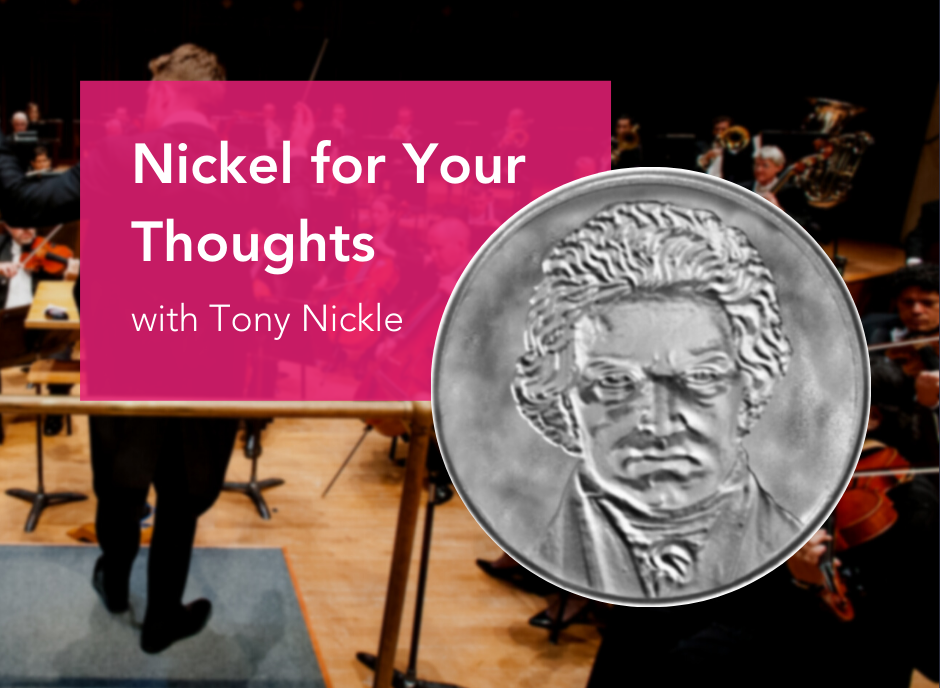In his own words, Artistic Administrator Tony Nickle shares what he believes to be the high points of the program, but with a little edge and humor for good measure.
What a day. I’m writing this just hours after the Inauguration Ceremony. It was certainly filled with many moving moments, but particularly powerful to me was Amanda Gorman’s captivating reading of her poem, “The Hill We Climb.” The entire day embodied the diversity that is such an integral thread for our country, and this weekend’s program could not be more poignant. Beginning the program is Jessie Montgomery’s Banner, a piece the young composer wrote in 2014 as a tribute to the 200th anniversary of Francis Scott Key’s writing of The Star-Spangled Banner. In her notes she asks, “What does an anthem for the 21st century sound like in today’s multi-cultural environment?” Across the rhapsodic ten-minute piece, Ms. Montgomery incorporates quotations from our national anthem, along with snippets of other countries’ anthems and patriotic songs to emphasize the diversity and cultural juxtaposition that defines America. It is part celebration, but also an honest account of the challenges America has faced and continues to encounter in building a democracy that is available to all. She closes, “A tribute to the U.S. national anthem means acknowledging the contradictions, leaps and bounds and milestones that allow us to celebrate and maintain the tradition of our ideals.
Then follows the warhorse of the program: Dvořàk’s “New World” Symphony. So much can be said about this deeply familiar piece, but for me the pairing with Montgomery’s Banner is particularly interesting. The late 1800s were a period of massive expansion in the U.S.: an industrial revolution (part 2), the population exploding, inventions left and right by the likes of Thomas Edison and Alexander Graham Bell, and the Gilded Age, all codifying a strong identity for America’s voice. To this point, classical music in America drew heavily – if not almost exclusively – from the European tradition. Meanwhile in Europe, nationalism had been reaching a fevered pitch for decades, with composers increasingly incorporating their country’s unique sounds into their compositional language. The relatively young National Conservatory of Music in New York felt it was time for American classical music to get a reboot. They invited Dvořàk, who had great success in the 1880s with his Seventh and Eighth Symphonies, to come to the States in 1892 to run the conservatory and help American composers identify their own voices. While in the States, he wrote this symphony with hopes it could serve as a beacon. He insisted that African-American spirituals, not the sound of Beethoven and Brahms, were a wealth of inspiration that ought to provide the foundation for the future of American classical music. Can you imagine the reactions? What a radical, but wonderful idea. There is a fair bit of debate over where and to what degree Dvořàk incorporated elements of spirituals into his symphony, but several scholars whom I respect (take my word for it) assert that the opening of the first movement, and especially the famous tune in the second movement are prime examples. You could argue that famous tune also has roots in Scotch-Irish music, but that was also unquestionably integral to American folk music. Either way, Dvořàk provided a stunning example of how there was source material right in front of everyone’s noses for an American sound, and it celebrated the already diverse tapestry that made up America’s population.
We’re nearly sold out this weekend, but we are streaming the program on Friday evening (details here). Please join us in a celebration and reflection of the diversity that makes us stronger and gives us voice.
By Tony Nickle, Artistic Administrator


